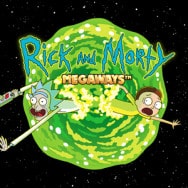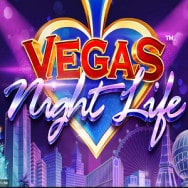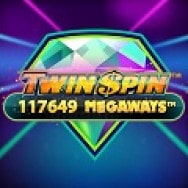Online Slots History
When you sit down, load up and prepare to click spin on the latest hi-tech slot do you imagine yourself in a lineage that dates back to the late 19th century streets of New York – the bubbling melting pot at the heart of America’s rise to the peak of global power.
No, of course, you don’t.

Best High Payout Slots
The Early Days – Play Your Cards Right
Most innovations improve on something that already exists. It’s a cliché to say that nothing really new is left to be discovered, and clichés always contain some hint of truth in them.In this case, the first slot was a new way of playing cards – the distilled essence of poker, you might say. The history of the early days of slots is not clear. There are two generally recognised candidates for the first slot machine: the Sittman and Pitt game of 1891 and the Fey Machine that was invented somewhere between 1887 and 1895.
Both were automated poker games.
The laws of the United States – a contradictory place (like everywhere) founded by puritans proclaiming liberty for all while denying it to whole sections of their society – are a joy for fans of complexity, contradiction, and cock-up to behold.
It’s possible that the birth of slot machines was a reaction to the widespread use of laws to try to restrict gambling. If you don’t word a law closely enough then clever people will try to find a way around it – no officer, I’m not playing poker, and I’m playing auto poker!
The Sittman and Pitt game did use five rotating drums to deliver a poker hand. To simplify the mathematics and mechanics – and coincidentally improve the profit margin (something you’ll see a lot of in this story) – the inventors dumped the 10 of spades and the jack of hearts, cutting in half the chances of getting a royal flush another big innovation: automatic pay-outs. This meant that the machine didn’t need to be watched and it could just sit in the corner earning money – nice. He also dumped the direct link to poker by replacing actual cards with symbols:
- Hearts
- spades
- Diamonds from a deck of cards
- A Liberty Bell
Fey didn’t patent the game and it took off around the United States to such an extent that it was legislated against. The next innovation then was legally enforced and “Fruit Machines” were born, paying out prizes that weren’t cash. Usually, sweets or fruit the Bar symbol we still see is a relic of this enforced design change and was probably the logo of a fruit company (though some accounts insist it is a diagrammatic representation of a packet of chewing gum).
The Modern Era Dawns – Electricity Baby!
Slot machines continued to be produced to this model for several decades.A lever at the side of the machine was pulled to start the game, though in fact it really started a timed sequence that would stop the released reels at random rather than actually spinning the reels. This gave the games another popular name – one-armed bandits (bandits are not generally known in popular culture for leaving those with whom they meet with more cash, this gives you some idea of how the games were already regarded!)
It took until 1964 for the mechanical spell to be broken. Bally did it. And Bally are still with us, operating both on and off-line as major game producers and more. Money Honey was the first electromagnetic game. It also had a much bigger cash store so it could pay out much larger jackpots. Although the lever’s mechanical mechanism was no longer needed, Bally used a lever as a game-starting switch to allow consumers to enjoy a familiar feel.
Heading to the Web – Video Arrives
In 1976 reels were killed! The scene of the crime was in Las Vegas, and the murder instrument was a small Sony TV display, which showed the new video reels. When the game was licensed by the Nevada State Gaming Commission (the regulator of Las Vegas’ casinos and therefore one of the most powerful bodies in the world of gambling) it took off in the desert gambling mecca. The company that made it Fortune Coin were swallowed up by IGT (International Gaming Technology) a company that still stands like a colossus over much of the casino gambling industry.
WMS are also still around and their big innovation was 1996’s Reel ‘Em title, a game that added a bonus round played on a second screen. This deepened gameplay and made bigger prizes possible. The games started to eat up Las Vegas floor space and play an increasing role in the balance sheets of big gambling corporations.
Online We Go – the Internet Cash Boom
Around the time that WMS’s games were spinning on every casino floor in the world, a new world was being born in something that would soon be called cyberspace. Online businesses need cash transfers to work. This is particularly true of gambling businesses, which really need to be able to pay money out instantly.So, internet gambling was waiting for internet banking to catch up with it.
Slot machines are relatively simple in programming and tech terms, but players have to be able to pay in and casinos have to be able to pay out. The company that claims to have made the first online casino site is with us now.
Microgaming teamed up with a company called Cryptologic to launch the first online casino. If you haven’t heard of Cryptologic that is because they’re not a big name in the gambling world, at least in the “customer-facing” part of that world, but there are something that is vitally important to that world. They are an online security company.
And to be secure customers also wanted some sort of licensing. Gambling is routinely regulated around the world. The birth of the internet created a new domain that was hard to regulate. This has come up time and time again in the history of online gambling, most often in response to laws in the United States, which is an enormous gambling market that is only sporadically legally recognised – the reason why the US has an enormous single-industry gambling city in the shape of Las Vegas, is because it has so often been illegal in so many other places.
The first country to legalise gambling online around the world is rather unlikely. Antigua and Barbuda has been the victim of colonialism, but the internet allowed it to intrude back into western economies via its Free Trade and Processing Act of 1994 that offered a licensing system to casino sites based anywhere in the world.
This system has survived to an extent. For example, for many years, the UK recognised a number of licensing regimes, including notably Gibraltar and Malta. Those countries became honey pots for the gambling industry – they had licensing regimes and often happy low-tax regimes. To this day large parts of the gambling industry are European in a very real sense, with histories that read “founded in Sweden” and contact pages that list a parent company with an address in Malta.
The chronological coincidence of these two breakthroughs:
- International licensing
- Safe online transactions allowed the boom to start booming
In that year poker rooms were introduced, and they were the first internet gambling strand to really go majorly overground. IN doing so they attracted a lot of attention, perhaps of legislators, who in 1999 passed the United States major legislation on this subject, the Internet Gambling Prohibition Act. This didn’t pass, but the legality of online gambling in the US has been a long and unhappy story that got so messy that PayPal, a global business who at one point were the biggest payment processor in the gambling world left the industry completely to stay on the right side of US laws.
What Are Online Video Slots Now
The legality and otherwise of internet slots has shaped the industry, but so have a lot of other factors including customer demand, technology and much more. Since online casinos broke the barriers to entry that existed in the shape of security problems and cash slots have been released into an unlimited world of innovation – or something like that.Certainly, untethered from any physical limitations there are far fewer problems in coming up with new styles of play and just go with them. The current slots world is massively diverse and it’s not possible to include here every new style of game that has been produced since the games went online.
This is all down to computers. Games have been monitored by microprocessors for a long time. Cabinet games in the UK had to use them to keep in line with gambling legislation. This was even the case with games with physical reels. With video screens, the limits of reels disappear.
The mathematics of slot games are relatively simple, but they come up against the physics of the physical world if they have physical parts. For a reel to have, say, 50 symbols on a reel is too much. This puts limits on the odds against various combinations happening and limits pay outs.
Going online and going virtual removes all and any such limits.
So, we now have a load of new innovations like:
Online Slots with Multiple Rounds
Video slots started to introduce second screens on which a second bonus game could be played.Online video slots can go even further. While the action generally takes place in a single screen, the action can appear to shift to any number of scenes.
So bonus games can include different playing areas entirely.
Online Slots with Odd Reel Sets
Slots online can have really any number of reels. They still largely stick to two classic modes (remember the innovators who had to include a pull lever to keep games looking familiar?): three reels or five reels.
Both of these set-ups generally have three rows of symbols in play. However, there aren’t really any practical limits on how many lines can come into play apart from the practicalities of fitting symbols onto a screen.
Square games tend to have the most symbols and these tend to peak at around 10 by 10, putting 100 symbols in play.
Online Slots with Many Pay-Lines
The first slot games had one pay line – a straight line across the centre of the game. It is rare to find anything so simple these days.Pay lines link up symbols to award-winning combinations. A 5 by 3 game will usually have at least 10 and commonly 20 or 30 pay lines – routes across the screen that form winning combinations.
There are no limits though and newer games have gone outside the pay line model entirely to introduce;
Online Slots with Ways to Win
Ways to win is more than just a different way of naming a pay line. Normally, these are symbol combinations that do not rely on a simple linear connection along a pay line. A common way-to-win model will award prizes if symbols are shown on adjacent reels, regardless of whether or not there is a connection between the two symbols.This reaches its logical conclusion in clusters. This system is common in games with very large numbers of symbols and novel delivery mechanisms. Clusters are just groups of symbols rather than lines of them. Like pay lines it’s a case of the more the merrier for players – clusters can mean big groups of symbols.
Megaways
One of the most recent innovations is the Megaways system.This is massively popular and has now spread well beyond its original producers, Big Time Gaming, to be licensed out to a number of other developers.
Megaways games combine a number of innovations, including ways to win the system that can offer a potential of other 100,000 winning combinations when full reels (changing reel sets are standard in this model) are in play.
Megaways often include another innovation of the internet age:
Tumbling and Collapsing Reels
Without a need for a spinning reel, there is no need to show a spinning reel. Tradition demands it, but you can simply show symbols appearing out of the blue if you so desire.More common are tumbling blocks with symbols on them. These drop into place, and are often combined with a tumbling mechanism that offers a sort of respin. In these systems wins are rewarded with another wager: the winning symbols explode out of existence and this allows new symbols to fall into place. This usually continues until there are no more prizes to be had.
Progressive Jackpot Online Slots
Progressive games aren’t an innovation completely of the internet era, but the online world has supercharged them.Progressives work by taking a small amount from every wager and diverting it into a jackpot pool that is awarded rarely and at random.
This can work on a single game, or it can work on any number of games that a designer can network together. The original progressives were played in the vast slots halls of big Vegas casinos. These networks soon became bigger by linking casinos together. But online, progressives can have potentially vast networks of machines linked together.
This means huge prizes that can build up extremely quickly.
A Big New World and a Bright Future
The slots world is massive. And it shows no signs of shrinking, although there is a good deal of pressure on the industry in some countries to improve safety measures for players.This might see some of the first steps back in terms of innovation. That is the removal of features in order to provide a better or safer experience for players. This is amply evidenced by the recent decision of the UK’s gambling regulator The Gambling Commission to take all autoplay and turbo play systems out of UK slot games.
That’s a good reminder that not all innovations are good news for players. For example, it is now relatively commonplace for games to be offered with what are called RTP ranges. Without going into all the technicalities of this, this means that players can be offered a different pay out experience at the decision of the game operator.
We doubt that that innovation will work in favour of players.
However, with roughly 19,000 games from nearly 500 providers currently on the market players do at least have some chance to shop around.



































